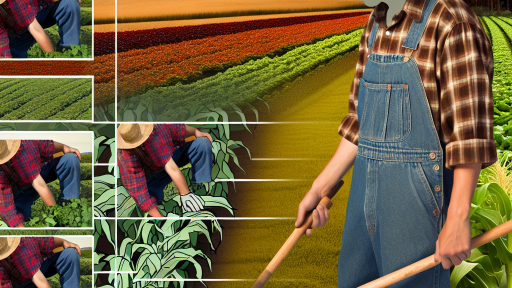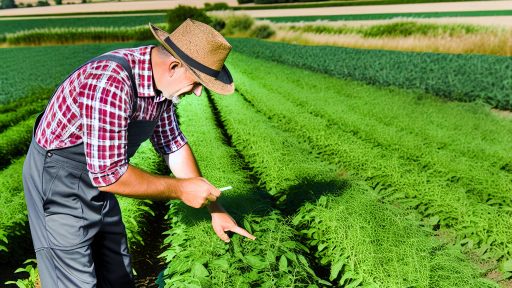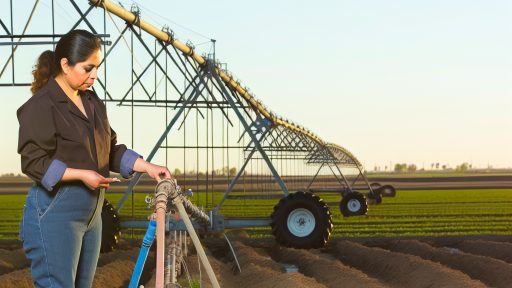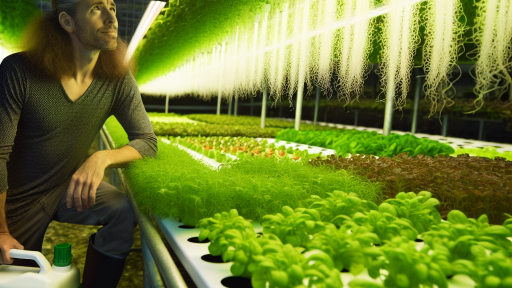Introduction to Conservation Tillage
Conservation tillage involves minimal soil disturbance during planting.
This practice preserves soil structure and health.
Farmers often adopt it to enhance soil moisture retention.
Furthermore, it reduces erosion and improves crop yields.
One significant benefit is the preservation of organic matter.
In addition, this approach supports beneficial microorganisms in the soil.
Thus, conservation tillage fosters a healthier ecosystem.
Definition and Importance
Conservation tillage is defined by the reduction of tilling depth.
It includes techniques like no-till and reduced-till farming.
Farmers emphasize this strategy to manage soil resources effectively.
Soil compaction decreases, allowing roots to grow deeper.
Moreover, fewer inputs are required for weed control.
Consequently, farmers can save time and money.
Environmental Benefits
Conservation tillage positively impacts the environment.
It helps capture carbon, mitigating climate change effects.
Transform Your Agribusiness
Unlock your farm's potential with expert advice tailored to your needs. Get actionable steps that drive real results.
Get StartedThis method also enhances water quality by reducing runoff.
Additionally, it fosters biodiversity in agricultural landscapes.
As a result, wildlife habitats can thrive alongside farming activities.
Economic Advantages
Farmers who use conservation tillage often see increased profits.
Lower labor and fuel costs significantly impact overall expenses.
Moreover, higher yields can be achieved with less input.
This practice can also improve land value over time.
Consequently, more farmers are considering its long-term benefits.
Types of Conservation Tillage
No-Till
No-till farming involves planting crops without disturbing the soil.
This method minimizes soil erosion dramatically.
Farmers who practice no-till see improved soil structure over time.
Furthermore, this technique enhances moisture retention.
Additionally, it promotes healthier ecosystems by preserving soil organisms.
One significant advantage is reduced fuel costs for machinery.
However, it requires careful management of weeds and crop residues.
Reduced Tillage
Reduced tillage encompasses various practices that limit soil disturbance.
This method includes practices that prepare the seedbed with less disruption.
Farmers can adjust their tillage levels based on specific crop needs.
Benefits include soil health improvement and increased organic matter.
Moreover, reduced tillage can lead to higher crop yields in the long run.
It requires monitoring to manage weed pressure effectively.
Strip Tillage
Strip tillage combines the benefits of tillage and no-till approaches.
This method involves tilling narrow strips of soil for planting.
The untilled areas retain moisture and organic matter.
Showcase Your Farming Business
Publish your professional farming services profile on our blog for a one-time fee of $200 and reach a dedicated audience of farmers and agribusiness owners.
Publish Your ProfileStrip tillage promotes healthy root systems and enhanced nutrient uptake.
Furthermore, farmers report reduced fuel and labor costs.
It also allows for effective weed management between strips.
However, planning is essential to optimize the tillage strips.
Benefits of Conservation Tillage
Soil Health
Conservation tillage improves soil structure and aeration.
This practice enhances microbial activity in the soil.
Healthy soil is vital for robust plant growth and nutrient uptake.
Furthermore, conservation tillage preserves soil organic matter.
This leads to higher fertility and water retention capacity.
Erosion Control
Conservation tillage significantly reduces soil erosion.
By maintaining crop residue on the surface, soil is protected from wind and water.
This practice minimizes runoff, keeping vital nutrients in the field.
As a result, it helps maintain the integrity of the landscape.
Consequently, farmers can observe a more stable farming environment.
Water Management
Implementing conservation tillage promotes better water infiltration.
Soil covered by residue absorbs water more efficiently.
This reduces the risk of flooding and helps with drought management.
Additionally, conservation tillage helps hold moisture in the soil.
Farmers benefit from improved yields during dry spells.
You Might Also Like: Enhancing Farm Efficiency with Waste Management
Best Practices for Implementing Conservation Tillage
Soil Testing
Soil testing is a crucial step in conservation tillage practices.
It provides vital information about nutrient levels and pH balance.
Regular testing allows farmers to make informed decisions.
Understanding soil composition helps in developing appropriate management plans.
Utilize local agricultural extensions for accurate soil testing services.
After testing, analyze results carefully and adjust practices accordingly.
This proactive approach can lead to healthier crops and improved yields.
Crop Rotation
Implementing crop rotation enhances soil health and fertility.
This method helps prevent soil degradation and pest buildup.
Skinner Farms effectively rotates corn with soybeans and legumes.
Such practices introduce diversity, breaking cycles of disease and pests.
Rotate crops to utilize various nutrients present in the soil.
Additionally, specific crop combinations can improve overall productivity.
Farmers should plan rotations that align with local climate conditions.
Consult agronomists for tailored rotation strategies based on your region.
By adopting effective crop rotation, farmers can maximize soil and crop benefits.
Discover More: Crop Rotation Methods to Enhance Farm Sustainability
Challenges and Limitations of Conservation Tillage
Pest Management
Pest management remains a significant challenge in conservation tillage systems.
These systems can create favorable conditions for certain pests.
For example, residues can harbor insects, leading to population increases.
Showcase Your Farming Business
Publish your professional farming services profile on our blog for a one-time fee of $200 and reach a dedicated audience of farmers and agribusiness owners.
Publish Your ProfileFarmers must adopt integrated pest management strategies to mitigate risks.
This includes monitoring pest populations and implementing biological controls.
Additionally, rotating crops can help disrupt pest life cycles.
Choosing resistant crop varieties is another effective strategy.
Nevertheless, research on specific pests is essential to tailor approaches.
Collaboration with agronomists can enhance pest control efforts.
Soil Preparation
Soil preparation poses unique challenges in conservation tillage.
These systems depend on existing soil structure and health.
Unfortunately, compaction can inhibit root development and water infiltration.
This can ultimately limit crop yield potential.
Farmers should conduct soil testing to assess compaction and nutrient levels.
Employing cover crops can improve soil aeration and organic matter.
Furthermore, using shallow tillage occasionally can aid in soil preparation.
Monitoring moisture levels is critical for maintaining soil health.
Lastly, farmer education on proper techniques can lead to improved outcomes.
Uncover the Details: Organic Farming Methods To Improve Soil Health
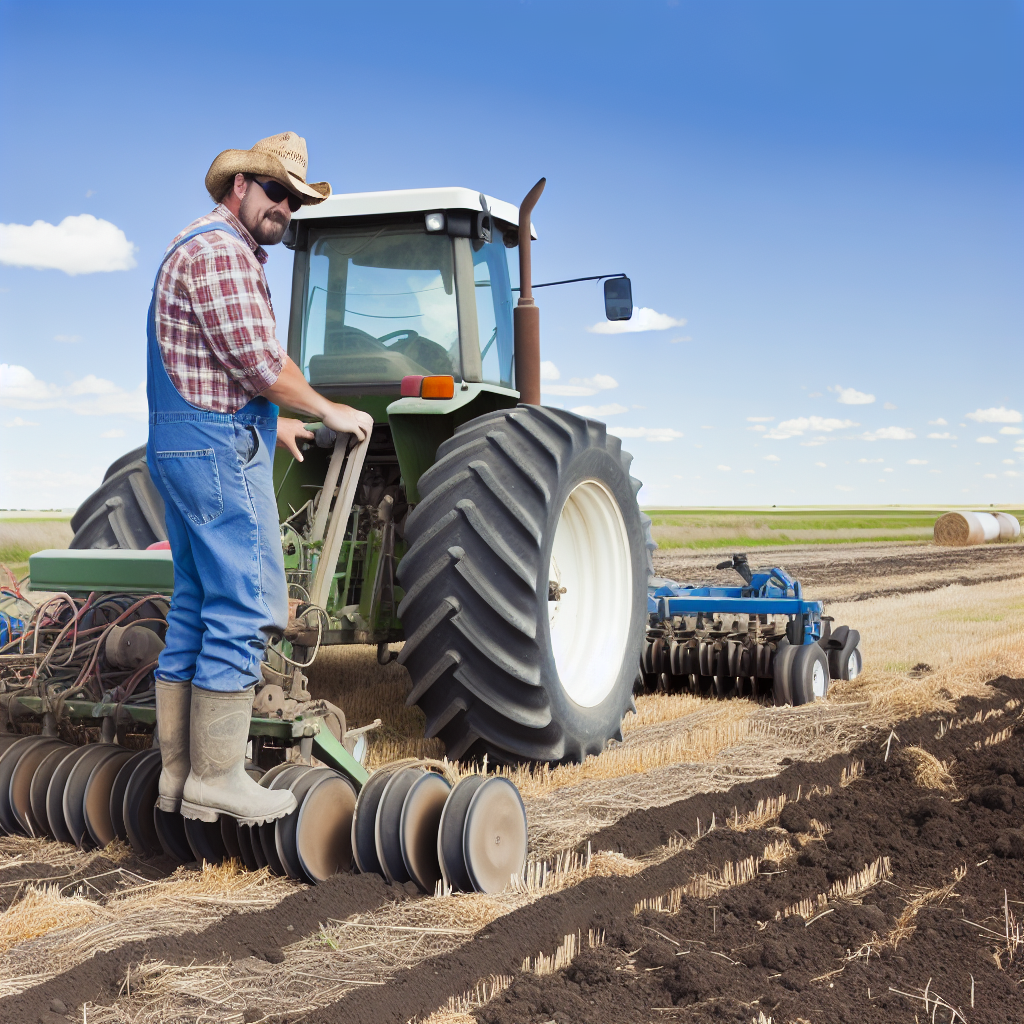
Case Studies: Successful Implementation of Conservation Tillage in Various Crops
Overview of Conservation Tillage
Conservation tillage refers to agricultural practices that enhance soil health.
This method minimizes soil disturbance and promotes sustainability.
Farmers across the globe have adopted these practices for various crops.
Case Study: Corn Production
In Illinois, farmer Mark Thompson implemented conservation tillage for his corn fields.
He observed decreased soil erosion and improved moisture retention.
As a result, his corn yields increased by 15% over three years.
Additionally, the soil health improved significantly, allowing for reduced fertilizer input.
Case Study: Soybeans
Soybean farmers in Ohio adopted conservation tillage with positive results.
They utilized cover crops to enhance soil structure and reduce nitrogen loss.
This practice led to a 200-pound reduction in nitrogen fertilizer use.
Moreover, soybean yields remained consistent, demonstrating economic viability.
Case Study: Wheat Cultivation
In Canada, wheat cultivation benefited from conservation tillage practices.
Farmers noted a reduction in weed pressure due to less soil disturbance.
This outcome allowed for minimal herbicide applications.
Consequently, wheat growers experienced lower production costs while maintaining yields.
Case Study: Sustainable Practices Comparison
A comparison of conventional and conservation tillage illustrated significant differences.
In states like Nebraska, conservation tillage reduced carbon emissions dramatically.
Moreover, participating farmers reported increased biodiversity in their fields.
This not only enhanced resilience but also promoted healthier ecosystems.
Implications of Conservation Tillage Practices
These case studies highlight the versatility of conservation tillage.
Farmers can adapt these strategies to various crops successfully.
The evidence suggests that conservation tillage benefits both economics and the environment.
Uncover the Details: Biodiversity’s Role In Sustainable Soil Health
Comparative Analysis: Conservation Tillage vs. Traditional Tillage Methods
Understanding Conservation Tillage
Conservation tillage minimizes soil disruption.
Showcase Your Farming Business
Publish your professional farming services profile on our blog for a one-time fee of $200 and reach a dedicated audience of farmers and agribusiness owners.
Publish Your ProfileIt involves practices like no-till and reduced-till farming.
This method enhances soil structure and moisture retention.
Furthermore, it reduces erosion significantly.
Exploring Traditional Tillage
Traditional tillage completely turns the soil over.
This process prepares the land for planting effectively.
However, it often leads to soil erosion.
Moreover, it can deplete soil nutrients over time.
Environmental Impact Comparison
Conservation tillage encourages better soil health.
It promotes the growth of beneficial microorganisms.
In contrast, traditional tillage can harm these organisms.
This is crucial for sustainable agricultural practices.
Economic Considerations
Conservation tillage can lower operational costs.
It reduces fuel consumption due to less soil disturbance.
On the other hand, traditional tillage may require more machinery and labor.
This can lead to higher overall expenses for farmers.
Crop Yield Outcomes
Research shows that conservation tillage can enhance yields.
It improves water retention, promoting better crop growth.
However, traditional tillage often leads to immediate higher yields.
Long-term benefits of conservation tillage can outweigh this advantage.
Adaptation and Adoption Challenges
Many farmers hesitate to switch to conservation tillage.
They often fear initial yield losses during transition.
Furthermore, lack of knowledge can impede adoption.
Education and support are key for successful integration.
Future Trends in Conservation Tillage
Technology Integration
Emerging technologies are transforming conservation tillage practices.
The use of precision agriculture tools enhances efficiency.
Farmers now leverage drones for monitoring field conditions.
These innovations allow for timely interventions and data collection.
Additionally, automation in farming equipment is on the rise.
Robotics can perform tasks such as planting and weeding.
This trend reduces labor costs and improves productivity.
Furthermore, satellite imagery provides insights for better management.
Farmers can now analyze soil health from above.
Overall, integrating technology streamlines conservation efforts.
Sustainable Practices
Sustainable practices are crucial for the future of agriculture.
Crop rotation promotes soil health and reduces pest cycles.
Cover crops enhance soil organic matter and prevent erosion.
These methods improve water retention and support biodiversity.
Moreover, reduced tillage leads to lower carbon emissions.
Farmers adopt integrated pest management for optimal results.
This approach minimizes chemical usage while protecting crops.
Showcase Your Farming Business
Publish your professional farming services profile on our blog for a one-time fee of $200 and reach a dedicated audience of farmers and agribusiness owners.
Publish Your ProfileLastly, organic amendments boost soil fertility sustainably.
Farmers are increasingly recognizing the value of soil health.
These sustainable practices will shape modern agriculture.
Additional Resources
What is Sustainable Agriculture? | Union of Concerned Scientists
Cover Crop Trends, Programs, and Practices in the United States

